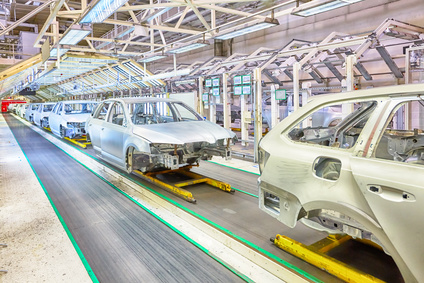Trump tweets hit windshield of reality

One tweet at a time, president-elect Donald Trump is fostering uncertainty in the North American auto industry.
His threat to impose tariffs at the U.S.-Mexico border to protect the industry raises the possibility that Canada might also be affected by such a measure.
If this were to happen, the economic consequences could be very harmful for both Canadians and Americans, since after half a century of trade liberalization the two countries’ automotive industries are now completely integrated.
Before being seduced by the promise of a better world where “made at home” is the norm, it is important to recall some recent history.
In the early 1960s, the Canadian auto industry was fettered by substantial tariff barriers.
A limited number of companies produced few vehicles, which were intended almost exclusively for Canadian consumers.
Total Canadian production was just 379,000 vehicles a year at the time, which was not nearly enough to obtain substantial economies of scale.
As a result, a car purchased in Canada was up to 50% more expensive than if it had been purchased in the United States, and Canadian consumers had access to a smaller selection of models.
In 1965, a trade dispute between the United States and Canada led to the ratification of the Auto Pact between the two countries.
By substantially reducing customs duties, this agreement allowed the big automakers as well as their suppliers to integrate their facilities on both sides of the border.
This cross-border integration and the reorganization of production that it entailed allowed for a more efficient allocation of resources stemming from a higher level of specialization and economies of scale.
The opening up of the border also encouraged the expansion of the automotive industry’s supply chains such that a wider variety of suppliers from both countries were able to be involved in the manufacture of a single vehicle.
The integration of the North American automotive market became even more pronounced with the entry into force of NAFTA in 1994, which superseded the Auto Pact.
The latter was abolished in 2001 when certain of its provisions were declared illegal by the World Trade Organization.
Since NAFTA came into effect, the total value of the Canadian auto industry’s production and exports has increased substantially.
Accounting for inflation, total production for assembly plants and parts suppliers grew from $51.2 billion in 1992 to $92.7 billion in 2015, an 81% increase.
At the same time, exports grew by 72% and now total no less than $77 billion.
This increase is explained primarily by a greater trade volume between Canada and its NAFTA partners.
The American market alone represents 96% of Canadian exports in this industry.
Trade between the two neighbours is in fact highly concentrated between Ontario, where almost all of Canadian automotive manufacturing and jobs are located, and the neighbouring state of Michigan.
The imposition of restrictions at the Canada-U.S. border might lead to some short-term gains for a limited number of American workers, but consumers will have to pay more to purchase the same vehicle. Over the longer term, the relative competitiveness of companies located in the United States could also be reduced as compared to Japanese, South Korean and European manufacturers.
If this happens, the number of vehicles produced on American soil could fall, and jobs would be lost.
For all these reasons, it is clearly not in the economic interest of the United States to jeopardize the integration of the American automotive industry with the Canadian industry, nor with the Mexican industry, for that matter.
It remains to be seen if other, more political considerations will motivate the new Trump administration to nonetheless adopt protectionist measures.
Germain Belzile is a Senior Associate Researcher, Current Affairs at the MEI, Alexandre Moreau, Public Policy Analyst at the MEI. They are the authors of "Is President Trump a Threat to Canada’s Auto Industry?" and the views reflected in this op-ed are their own.
____________________
Read more articles on the themes of "Labour" and "Regulations."

